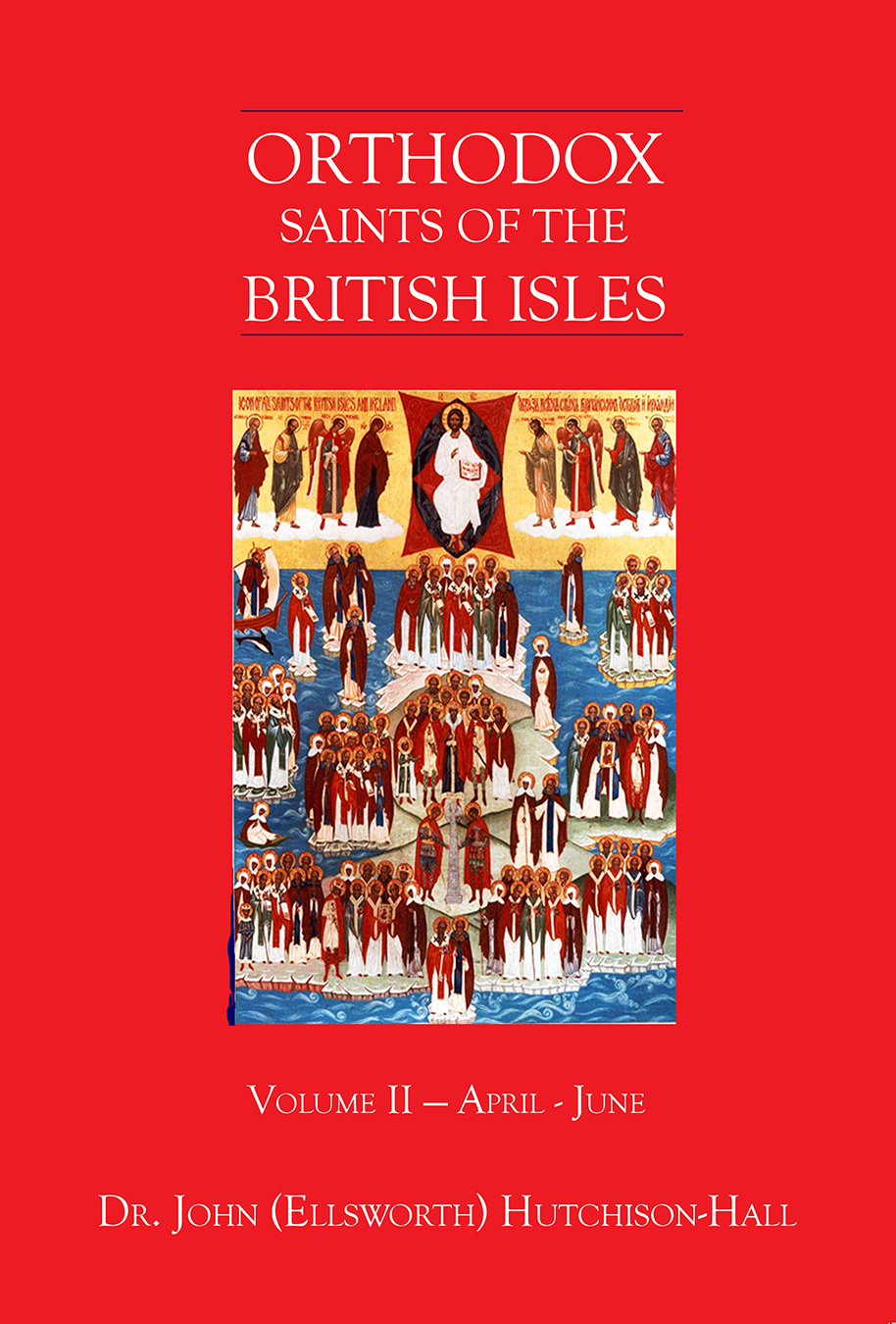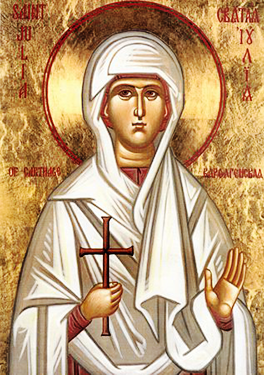
Orthodox Saints of the Pre-Schism
See of Rome
22nd May (NS) — 9th May (OS) 2023
BEATUS of BEATENBERG, Apostle of Switzerland, (Date Unknown), according to legend, St. Beatus was baptised in England by St. Barnabas the Apostle (11th June), and later priested by St. Peter the Apostle (29th June). St. Beatus then went, or was sent, to the area of Lake Thun in the the Bernese Oberland in present-day Switzerland. There he lived in a cave above the lake. The mountain was later called Mount Beatenburg in his honour.
GERONTIUS of CERVIA, a Bishop of Cervia near Ravenna (Italy). While returning from a synod in Rome circa 501, St. Gerontius was attacked and martyred on the Flaminian Way at a town called Cagli approximately 30 km (19 mi) south of Urbino (Italy).
GORFOR of LLANOVER, (Date Unknown) , the patron saint of Llanover in Gwent, Wales. Nothing else is known about this saint’s life.
GREGORY of OSTIA, a Cardinal-Bishop of Ostia near Rome. Later St. Gregory served as Papal Legate to the Kingdoms of Spanish Navarre and Old Castile, both part of present-day Spain. He reposed at Logroño, Castile circa 1048.
JOHN of CHÂLON, consecrated the third or fourth Bishop of Châlon-sur-Saône in Burgundy (France) by St. Patiens of Lyons (11th September). St. John reposed circa 475.
SANCTAN of KILL-da-LES, (Sixth Century) St. Sanctan was a Briton who went to Ireland where he was made Bishop of Kill-da-Les / Kill-na-Sanctan, an unknown See which may have been near present-day Dublin. Some sources state he was a son of St. Selyf of Cornwall (25th June), and a brother of St. Cybi (8th November), though there is nothing extant to substantiate this theory.
VINCENT of MONTES, a monk at the Monastery of St. Peter de Montes (Monasterio de San Pedro de Montes) in the Kingdom of León (present-day Spain), and disciple of St. Gennadius of Astorga (25th May) whom he succeeded as Abbot of St. Peter’s. St. Vincent reposed circa 950.
Get your copy of Orthodox Saints of the British Isles today.
Available at Amazon or your favourite e-bookstore.
AIGLULF (AGILULFUS) of BOURGES, a well-educated young man who became a hermit following the repose of his parents. St. Aigulf quickly became known for his great personal sanctity. When the See of Bourges (central France) fell vacant, circa 811, St. Aigulf was chosen to be the bishop. Quite reluctantly, he was consecrated Bishop of Bourges and was an excellent shepherd of his flock. St. Aigulf was in attendance at the Council of Toulouse in 829, and was one of the forty-three bishops who sat at the Synod of Thionville in 835 which deposed Ebbo, Archbishop of Reims, for his role in the revolt against Louis the Pious, King of the Franks (r. 814–840). St. Aigulf remained Bishop of Bourges until his repose circa 836.
AUSONIUS of ANGOULÊME, (Third Century), the first Bishop of Angoulême in Aquitaine (south-western France), and a disciple of St. Martial of Limoges (30th June). No further information on his life is extant.
BOBO (BEUVON) of PROVENCE, a Provençal soldier renowned for his role in the defence of Provence (southern France) against the Moors who were terrorising the region. St. Bobo left the military and became a hermit. While on a pilgrimage to Rome circa 985, St. Bobo reposed at Pavia in Lombardy (Italy), and was buried at Voghera.
BOETHIAN of PIERREPONT, (Seventh Century), a native of Ireland and disciple of St. Fursey (16th January), St. Boethian travelled to Picardy (northerm France) where he founded an abbey in Pierrepont 15 km/9 1⁄2 mi north-east of Laon. He was murdered by criminals whom he had previously castigated for their immorality.
CASTUS and ÆMILIUS (EMILIUS), two north African martyrs of the Decian Persecution. When first arrested, and tortured they renounced Christ and were released. They soon repented their apostacy, and were re-arrested. This time the remained steadfast in their faith and were burnt to death, circa 250.
CONALL (COEL, CONALD) of INNISCOEL, St. Conall was a seventh century Abbot of Inniscoel, Co. Donegal, in Ireland. There is a holy well at Inniscoel dedicated to him. Nothing further is known of his life.
FAUSTINUS, TIMOTHY, and VENUSTUS, three martyrs in Rome during the persecutions under Julian the Apostate circa 362.
FULK of CASTROFULI, a pilgrim on his way to Rome circa 600 who stopped at plague-stricken Santo-Padre or Castrofuli near Arpino in present-day central Italy to minister to the sick. Whilst caring for plague victims he contracted it himself and died. St. Fulk is the patron saint of both Santo-Padre and Castrofuli.
HELEN of AUXERRE, the Acts of Saint Amator of Auxerre (1st May) speak of St. Helen as a virtuous and godly young woman and a wonderworker. St. Helen also assisted at the deathbed of St. Amator. St. Helen reposed at Auxerre in Burgundy (France) circa 415.
JOHN of PARMA, a priest from Parma (northern Italy) who was made canon of the city’s cathedral at an early age. On one of his six pilgrimages to Jerusalem, St. John received monastic tonsure, and from 973 until his repose circa 982 was Abbot of the Abbey of St. John the Evangelist (Abbazia San Giovanni Evangelista) in Parma.
JULIA of CARTHAGE, (Fifth Century), a member of the Christian nobility of Carthage (a suburb of present-day Tunis, Tunisia) in Africa Proconsularis, and patron-saint of Corsica. St. Julia was captured by soldiers of Gaiseric, King of the Vandals (r. 428–477) during the invasion and sack of Carthage, and sold into slavery. The ship which was transporting St. Julia and her owner to Gaul (France), made a stop in Corsica during a pagan festival. When pressed to take part in the festival, St. Julia refused and was beaten and then crucified.
MARCIAN (MARIANO) of RAVENNA, the fourth Bishop of Ravenna (northern Italy) from circa 112 until his repose circa 127. Nothing further seems to be known of St. Marcian’s life.
QUITERIA, (Date Unknown), a saint, most likely of Spanish origin, who is venerated on the French-Spanish border, where several town have claimed possession of her relics. Unfortunately, there is no reliable information on St. Quiteria. If St. Quiteria flourished during a period of persecutions of Christians, it is highly probable she was a martyr.
ROMANUS of SUBIACO, a monk near Subiaco and friend of St. Benedict of Nursa (21st March), whom St. Romanus encouraged and provided with food in the first years of St. Benedict’s life as a hermit. A widely-held legend says St. Romanus went to Gaul where he founded a monastery near Auxerre in Burgundy (France). However, there is no historical evidence to support this. St. Romanus reposed circa 560.
Prior to the Schism the Patriarchate of Rome was Orthodox, and fully in communion with the Orthodox Church. As Saint John of Shanghai and San Francisco +1966 said “The West was Orthodox for a thousand years, and her venerable Liturgy is far older than any of her heresies”.
Details of British Saints excerpted from Orthodox Saints of the British Isles.
Details of continental saints from these sources.
In many cases there are several spelling versions of the names of saints from the British Isles. I use the Oxford Dictionary of National Biography version as the primary version with the more prevalent version in parenthesis e.g. Ceadda (Chad) of Lichfield.


